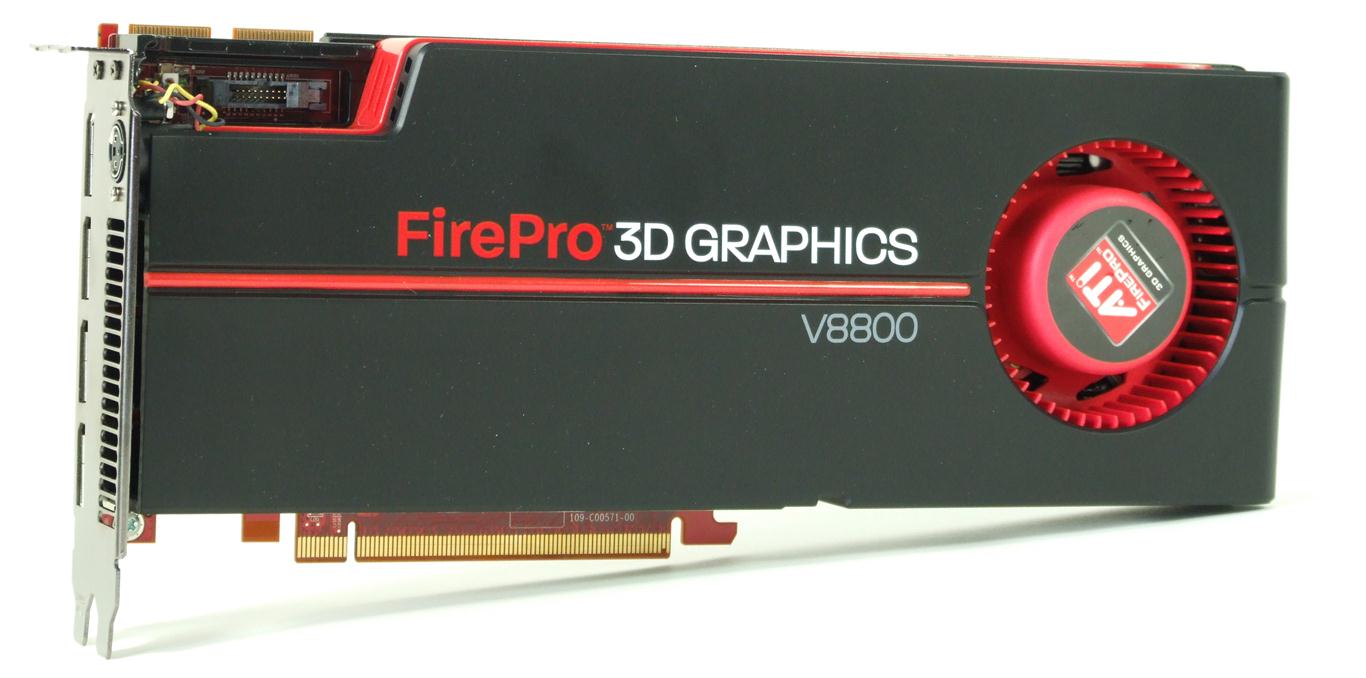Workstation Shootout: Nvidia Quadro 5000 Vs. ATI FirePro V8800
Nvidia sure didn't waste any time introducing its Fermi architecture to the workstation space. Its Quadro 5000 is one of the first models to use the company's GF100 graphics processor. How does this card stack up against ATI’s flagship FirePro V8800?
ATI FirePro V8800: Overview
AMD's ATI FirePro V8800 succeeds the FirePro V8700. Going only by the number of shader cores the V8800 is able to muster, you’d think there should be no competition. At first glance, the GPU’s 1600 shaders would indicate impressive performance potential. By comparison, Nvidia's 352 CUDA cores sound downright paltry. However, as our benchmarks will show, it’s not just about how many shaders you’ve got, it’s how you use them. At the end of the day, whether the cores are called CUDA or Stream says nothing about their capabilities.
As mentioned, the FirePro V8800 is closely related to the Radeon HD 5870. Both are built around the Cypress XT GPU, also known as RV870. Like Nvidia, AMD artificially hobbles its Radeon-class desktop cards through the driver, ensuring that only FirePro models will offer top performance in workstation scenarios. While a Radeon may seem like the less expensive choice, the upshot is that it’s a less-than-ideal card for a workstation.
How closely are these two cards related, then? Superficially, the Radeon HD 5870 and the FirePro V8800 are easy to tell apart simply by the product names printed on their shrouds and the model numbers on the PCB. Also, AMD has opted to rely completely on DisplayPort connections for its professional model, while the Radeon HD 5870 still comes with two DVI outputs and an HDMI connector as well. However, even a practiced eye would have trouble telling the two cards apart based only on their board layouts.
As expected, the ATI Fire Pro V8800 uses lower clock speeds than its desktop sibling. Again, the following table provides an easy comparison.
| Specifications | FirePro V8800 | Radeon HD 5870 |
|---|---|---|
| Chip | Cypress XT (RV870) | Cypress XT (RV870) |
| Memory | 2048 MB | 1024 MB |
| Core Clock Rate | 825 MHz | 850 MHz |
| Memory Clock Rate | 1150 MHz | 1200 MHz |
ATI has launched several workstation cards this year. These include the following models.
- ATI FirePro V8800 (2 GB GDDR5, Cypress XT / RV870)
- ATI FirePro V7800 (2 GB GDDR5, Cypress Pro / RV870)
- ATI FirePro V5800 (1 GB GDDR5, Juniper XT / RV840)
- ATI FirePro V4800 (1 GB GDDR5, Redwood XT / RV830)
- ATI FirePro V3800 (1 GB GDDR3, Redwood XT / RV830)
Get Tom's Hardware's best news and in-depth reviews, straight to your inbox.
Current page: ATI FirePro V8800: Overview
Prev Page Nvidia Quadro 5000: Features, Connectors, And Driver Next Page ATI FirePro V8800: Features, Connectors, And Driver-
tacoslave if amd put a little more work on their drivers (i.e crossfire and firepro performance)they would be the clear performance champion.Reply -
Gin Fushicho I really wish I knew what these numbers meant.Reply
For someone who doesn't do 3-D design these benchmarks are kinda confusing. -
joytech22 You need to remember, Fermi is designed not "Just" for games, but was also designed, from day one, with computing in mind as well.Reply -
SchizoFrog Once again the arguement regarding AMD Drivers is brought to the fore. But more than this, when AMD has a line of products that could be said to 'miss' they absolutely FAIL. nVidia on the otherhand seem to have learned their lesson well from the 5xxxFX series and can still produce products that can compete at least at some level, ie: GTX460. Although these are Workstation products, nVidia have a complete package with GPUs and Drivers that work from the off.Reply -
davefb sort of interesting, but why is there no comparison to mainstream boards? There is a massive premium of cost here but nothing to be able to say 'hey boss, the onboard graphics we use really don't cut it any more, how about a quadro'.Reply
(or have I sped-read past the reason why ;) )

